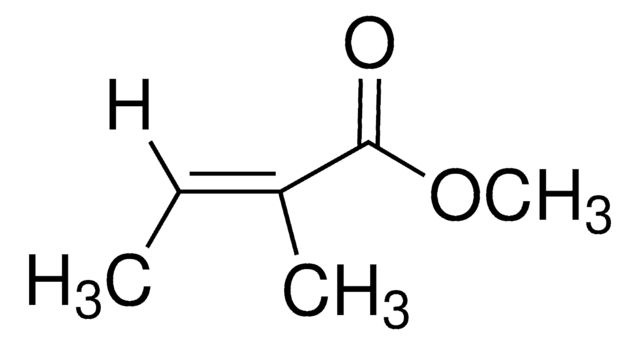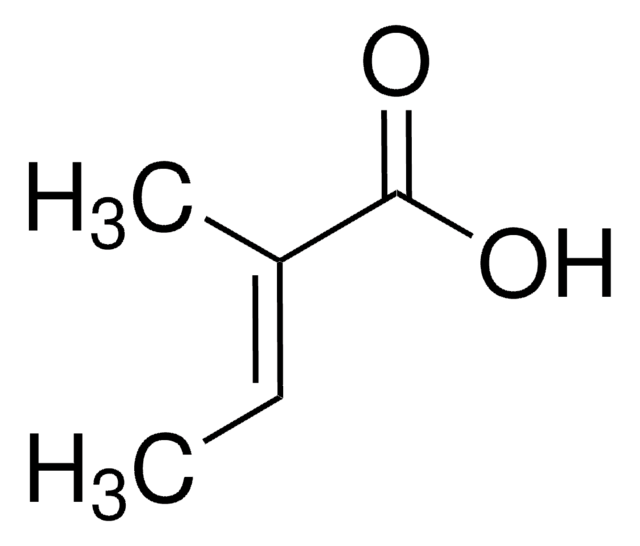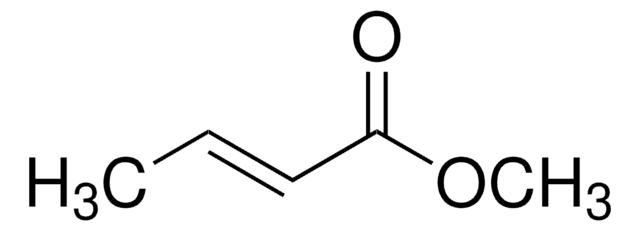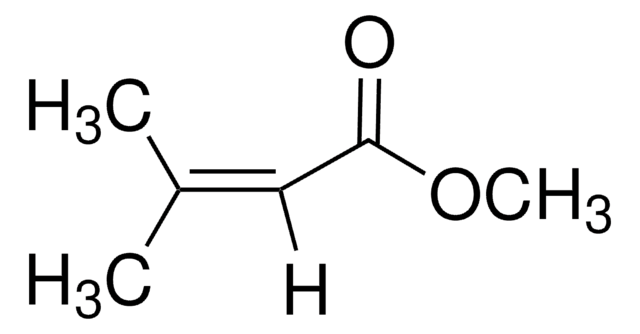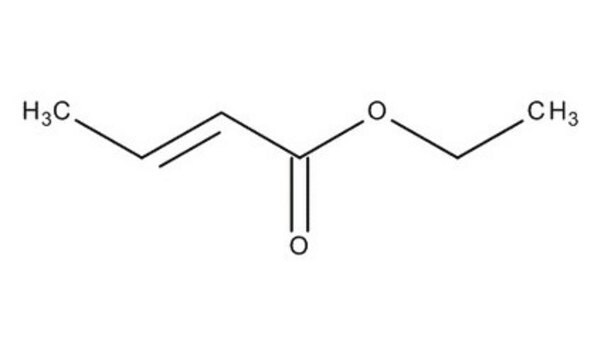W246000
Ethyl tiglate
≥98%, FG
Sinónimos:
Ethyl trans-2-methyl-2-butenoate
About This Item
Productos recomendados
origen biológico
synthetic
Nivel de calidad
grado
FG
Halal
Kosher
Agency
meets purity specifications of JECFA
cumplimiento norm.
EU Regulation 1334/2008 & 178/2002
FDA 21 CFR 117
Ensayo
≥98%
índice de refracción
n20/D 1.435 (lit.)
bp
154-156 °C (lit.)
densidad
0.923 g/mL at 25 °C (lit.)
aplicaciones
flavors and fragrances
Documentación
see Safety & Documentation for available documents
alérgeno alimentario
no known allergens
Organoléptico
berry; caramel; fruity; tropical; floral; sweet
cadena SMILES
CCOC(=O)\C(C)=C\C
InChI
1S/C7H12O2/c1-4-6(3)7(8)9-5-2/h4H,5H2,1-3H3/b6-4+
Clave InChI
OAPHLAAOJMTMLY-GQCTYLIASA-N
¿Está buscando productos similares? Visita Guía de comparación de productos
Categorías relacionadas
Descripción general
Aplicación
- Metabolism of ethyl tiglate in apple fruits leads to the formation of small amounts of (R)-ethyl 2-methylbutanoate.: Focuses on the metabolic transformation of ethyl tiglate in apples, which contributes to the fruit′s flavor profile (Hauck et al., 2000).
Palabra de señalización
Warning
Frases de peligro
Consejos de prudencia
Clasificaciones de peligro
Flam. Liq. 3
Código de clase de almacenamiento
3 - Flammable liquids
Clase de riesgo para el agua (WGK)
WGK 2
Punto de inflamabilidad (°F)
111.2 °F - closed cup
Punto de inflamabilidad (°C)
44 °C - closed cup
Elija entre una de las versiones más recientes:
¿Ya tiene este producto?
Encuentre la documentación para los productos que ha comprado recientemente en la Biblioteca de documentos.
Global Trade Item Number
| Número de referencia del producto (SKU) | GTIN |
|---|---|
| W246000-1KG-K | 4061834365532 |
| W246000-5KG | 4061833654347 |
| W246000-SAMPLE | 4061833343647 |
| W246000-100G | 4061833318027 |
| W246000-100G-K | 4061834365525 |
| W246000-1KG | 4061826683996 |
| W246000-5KG-K | 4061834422228 |
| W246000-SAMPLE-K | 4061834355250 |
Nuestro equipo de científicos tiene experiencia en todas las áreas de investigación: Ciencias de la vida, Ciencia de los materiales, Síntesis química, Cromatografía, Analítica y muchas otras.
Póngase en contacto con el Servicio técnico